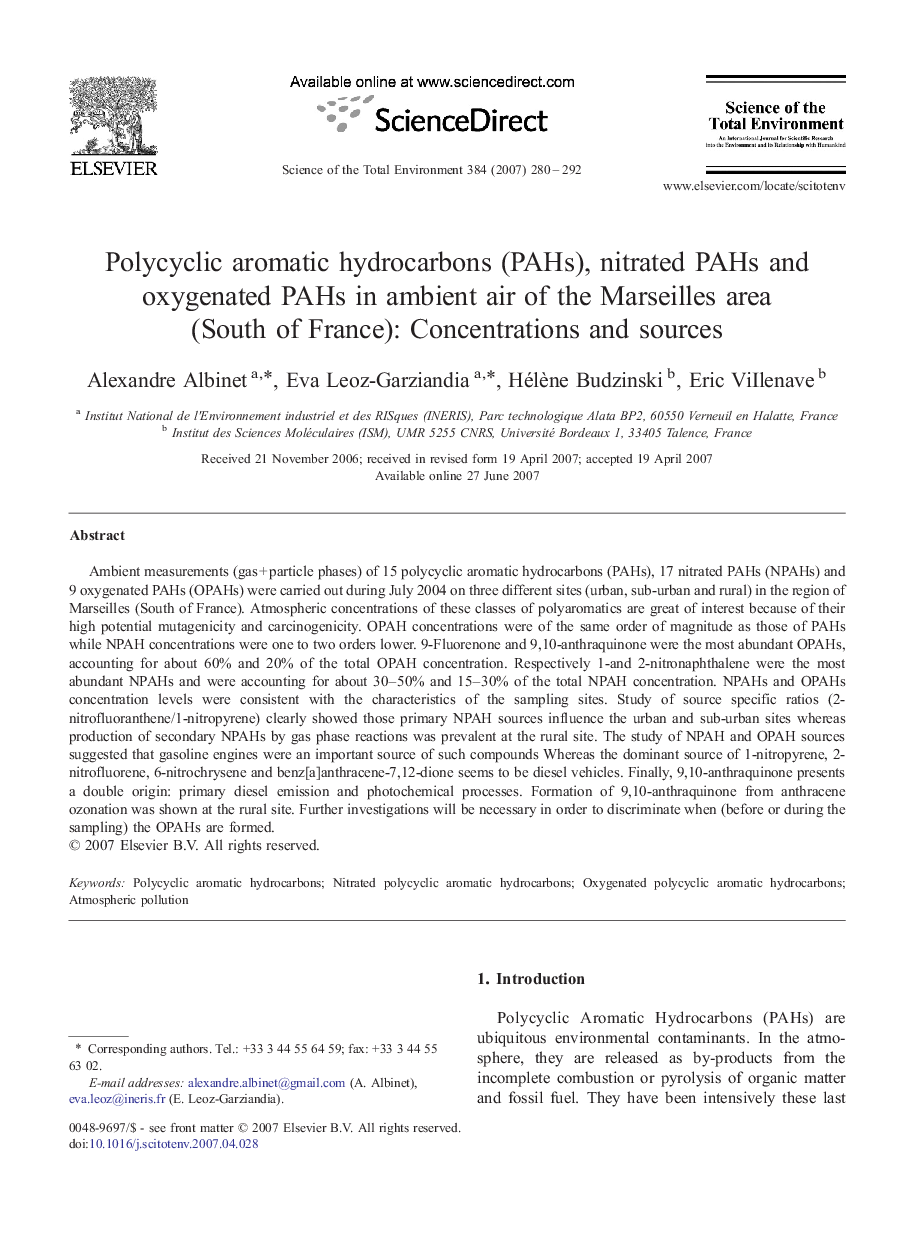| Article ID | Journal | Published Year | Pages | File Type |
|---|---|---|---|---|
| 4432875 | Science of The Total Environment | 2007 | 13 Pages |
Ambient measurements (gas + particle phases) of 15 polycyclic aromatic hydrocarbons (PAHs), 17 nitrated PAHs (NPAHs) and 9 oxygenated PAHs (OPAHs) were carried out during July 2004 on three different sites (urban, sub-urban and rural) in the region of Marseilles (South of France). Atmospheric concentrations of these classes of polyaromatics are great of interest because of their high potential mutagenicity and carcinogenicity. OPAH concentrations were of the same order of magnitude as those of PAHs while NPAH concentrations were one to two orders lower. 9-Fluorenone and 9,10-anthraquinone were the most abundant OPAHs, accounting for about 60% and 20% of the total OPAH concentration. Respectively 1-and 2-nitronaphthalene were the most abundant NPAHs and were accounting for about 30–50% and 15–30% of the total NPAH concentration. NPAHs and OPAHs concentration levels were consistent with the characteristics of the sampling sites. Study of source specific ratios (2-nitrofluoranthene/1-nitropyrene) clearly showed those primary NPAH sources influence the urban and sub-urban sites whereas production of secondary NPAHs by gas phase reactions was prevalent at the rural site. The study of NPAH and OPAH sources suggested that gasoline engines were an important source of such compounds Whereas the dominant source of 1-nitropyrene, 2-nitrofluorene, 6-nitrochrysene and benz[a]anthracene-7,12-dione seems to be diesel vehicles. Finally, 9,10-anthraquinone presents a double origin: primary diesel emission and photochemical processes. Formation of 9,10-anthraquinone from anthracene ozonation was shown at the rural site. Further investigations will be necessary in order to discriminate when (before or during the sampling) the OPAHs are formed.
